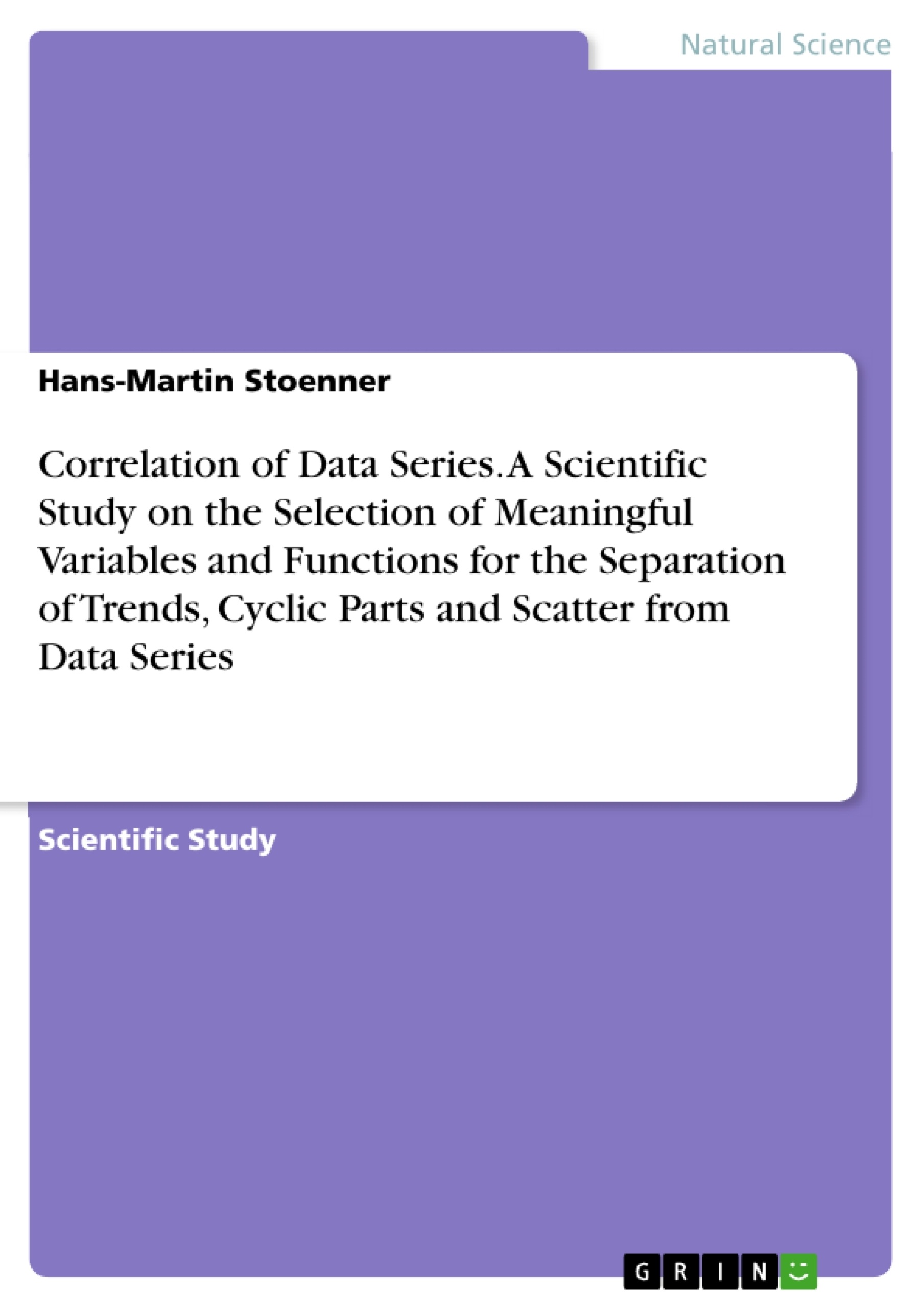Originally, I wrote this essay for readers interested in the correlation of data series, supplemented by examples for the explanation of the proposed methods. I have shown several mathematical models and numerous figures, graphics and charts for better comprehension.
During the preview of this essay the selected examples turned out to be so exciting, that a short introduction into the examples themselves would be advisable, also to readers not interested in mathematics and modeling:
The increasing number of annual airport passengers was a good example for the fundamental question whether time or population causes this increase.
For the rise of the atmospheric carbon dioxide content over long periods in between the present interglacial, I found an unrivaled variable for the correlation.
For the growth of the world population from origin of Homo sapiens up to its growth limit, I compared two different models, one time-based, the other one population-based.
For the long-term growth of Dow Jones Industrial Index, I found a good correlation with world population and time, while the long term volatility correlated fairly with time.
The long-term climate change correlates with world population, whereas the long natural cyclic climate observations correlate with time, and the combination of both lead to pioneering innovative visualizations, again within the present interglacial.
Inhaltsverzeichnis (Table of Contents)
- Preface
- On the Correlation of Data Series
- Selection of Meaningful Functions and Variables for the Analysis of Data Series
- Examples for Separating Functions
- Growth Functions
- Other Methods like so called Filters
- Useful functions for the steady part of the data series
- Cyclic Components
- Elimination of Scattered Points (Noise)
- Overview on Separating Functions
- Independent and additive trends and fluctuations
- Dependent and multiplicative growth functions
- Importance of Predictability
- Examples for the proposed Method
- Example One: World population time series
- Example Two: Dow Jones Industrial Index
- Example Three: World Climate Change
- Description of Climate Separating Functions
- Comparison of three different CRU time series
- Attention
- Conclusion
- Literature and Source of Examples
- Some Abbreviations and Nomenclature used
- List of Figures
Zielsetzung und Themenschwerpunkte (Objectives and Key Themes)
This scientific study aims to explore the correlation of data series by proposing methods for selecting meaningful variables and functions to separate trends, cyclic parts, and scatter from data series. The study utilizes various mathematical models and visual representations to enhance comprehension. It focuses on five key examples: world population, Dow Jones Industrial Index, atmospheric carbon dioxide content, airport passenger growth, and long-term climate change.
- Identifying and analyzing meaningful variables and functions for data series analysis
- Exploring the correlation between various factors, such as time, population, and natural cycles
- Developing methods for separating trends, cyclic parts, and scatter from data series
- Investigating the importance of predictability in understanding and forecasting data series
- Applying the proposed methods to real-world examples to demonstrate their practical application
Zusammenfassung der Kapitel (Chapter Summaries)
- Preface: This chapter introduces the study and its purpose, highlighting the importance of exploring correlations in data series. It also provides a brief overview of the five main examples used throughout the study.
- On the Correlation of Data Series: This chapter provides a general overview of the concept of correlation and its significance in understanding data series. It emphasizes the importance of finding meaningful variables and functions for accurate analysis.
- Selection of Meaningful Functions and Variables for the Analysis of Data Series: This chapter delves into the methods used to select appropriate functions and variables for analyzing data series. It discusses various techniques for separating trends, cyclic parts, and scatter from data series.
- Importance of Predictability: This chapter explores the importance of predictability in data series analysis. It highlights the limitations of extrapolations and the need for careful interpretation of results.
- Examples for the proposed Method: This chapter presents five real-world examples to illustrate the application of the proposed methods. The examples cover various areas, including population growth, economic indicators, and climate change.
Schlüsselwörter (Keywords)
The study focuses on the correlation of data series, using methods for selecting meaningful variables and functions to separate trends, cyclic parts, and scatter from data series. Key concepts include: data series analysis, trend separation, cyclic components, scatter elimination, predictability, and real-world applications. The examples used in the study highlight the importance of understanding correlations in various fields, including population growth, economics, and climate change.
- Quote paper
- Hans-Martin Stoenner (Author), 2015, Correlation of Data Series. A Scientific Study on the Selection of Meaningful Variables and Functions for the Separation of Trends, Cyclic Parts and Scatter from Data Series, Munich, GRIN Verlag, https://www.grin.com/document/301835



